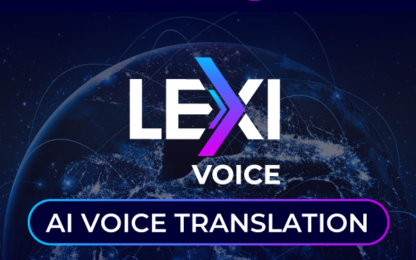
How AI is Changing the Sports Industry
How AI is Changing the Sports Industry
The pop-up shop has given way to the pop-up network. Momentum is building in sports production to develop increasingly flexible strategies for content distribution and refine IP-based workflows along the way.
Sports production may have its challenges, but its events-based nature is also presenting its own valuable opportunities.
“Advances in cloud, IP-based workflows, and AI are all helping to evolve sports content distribution,” says Bill McLaughlin, Ai-Media’s Chief Product Officer. “Traditionally you had a broadcast network which would manage the seasonality of different events by licensing a package of them. Then they always had something new to put on the air in spring, summer, fall, and winter.
“Today, however, leagues are increasingly taking control by going direct-to-consumer. A viewer can subscribe to a season of NBA League Pass or similar, they watch the games, and when the season’s over there’s no more content—it goes dark until next season.”
When combined with IP-based production, that leads to virtual production plans that can be turned off and on again precisely as needed.
“You use the virtual infrastructure only when you’re producing the content,” McLaughlin explains. “Express-to-consumer sports services can go totally dark, and that saves them budget resources when they’re using cloud-hosted services.
“Most solutions allow you to pay for licenses on a flexible basis, like Ai-Media’s iCap Alta cloud-based caption encoder for live IP video. That makes it easy to track your operational expenses against revenues, and scale up or down as needed.”
AI Captioning in Sports Production
As a mandated accommodation to meet accessibility compliance requirements in many regions, captioning is included in all these pop-up signal paths. AI-driven cloud solutions like Ai-Media’s LEXI automated captioning solution are increasingly being used to make subscription sports networks captioning ready.
“It’s a cloud-based captioning system that’s available when you need it—you can call for it from a software-scheduling API on demand,” says McLaughlin. “Human live captioning hasn’t developed that software operational workflow—people still schedule it and interact with captioning agencies in a manual manner.
“With AI captioning everything is managed as software, with a dashboard that can be integrated with cloud monitoring. When you’re building a video chain strictly with software, using an AI cloud service like LEXI makes a lot of sense.”
McLaughlin notes that these trends were already well under way prior to COVID. Nonetheless, the pandemic has stressed the importance of network flexibility, a need that software-based tools respond well to.
“With software, you can deal easily with unexpected cancellations,” he says. “Cloud also makes it easier for people to collaborate from anywhere, not unlike work from home scenarios worldwide. In sports production, that means you can send a smaller crew to the event itself, and then others like the voice talent or graphic artist can stay at home instead of travelling.
“That’s taken on a whole new significance since COVID. With a small infrastructure investment, all of these people can work in their homes. While previously this was being implemented mostly to save on travel expenses, it’s also now seen as providing resiliency in the face of something like COVID, which no one saw coming. We’ve seen that a lot can be accomplished in this paradigm, which opens up interesting new conversations.”
The Direct-to-Consumer Sports Content Model
Sports leagues and other sports content creators are increasingly going direct-to-consumer. For example, there are numerous opportunities for leagues to bring their content into as-yet untapped markets far from their home geography.
“OTT (over the top) type networks make it easy to design international out-of-market packages where the content is valued differently than the primary market,” says McLaughlin. “You can subscribe to a whole season of MLB in the Middle East for less than a month of US cable. It might not be the most popular sport around, but it’s incremental value that doesn’t hurt a league which is already making money on its home turf.”
Some level of localization is required for each market, which is where captioning and subtitling come in.
“There’s a layer of services around the signal, and captioning is the layer of services that most needs to be changed for the new market,” McLaughlin notes.
“Ai-Media’s iCap Alta, for example, makes it easy to integrate LEXI and add translated captions into a livestream. It can be run in the AWS Cloud or other public or private clouds, and can provide captioning in a country or region where your company doesn’t have a physical presence.”
One key to making advanced IP-based workflows work is if the tools are easy to use. With iCap Alta and Lexi, Ai-Media has seen how to make AI and cloud-based captioning work intuitively.
“We’re providing our users with their simplest vision of what it could be,” says McLaughlin. “Content creators have shown us they want software that can simply listen to the video streams and make captions based on the audio. That’s exactly what iCap Alta and LEXI do on demand, without the need for hardware encoders, converters, or any other physical equipment.”
Reshaping the Sports Landscape
Ai-Media’s LEXI is particularly well suited for the demands of globally expanding IP-based sports networks. Its Topic Models feature enables LEXI to recognize topics distinctive sports-related vocabulary, like athlete and team names, and observe context by absorbing relevant web data.
Lexi’s deep translation capabilities are powered by iCap Translate. This AI-powered captioning translation service can translate captions and subtitles to and from over 100 languages. Sources that iCap Translate works with include a live LEXI speech-to-text job, or a previously recorded and embedded caption track.
As pop-up sports networks continue to expand, expect that cloud, AI, and other advances will reshape the content production landscape as well as the audience experience.
“It’s an exciting time, because there are more and more choices available to people wherever they live,” McLaughlin says. “Leagues realize that there’s no longer a restriction on the number of channels, and that content doesn’t have to get big ratings in order for them to get their ROI.
“Solutions like EEG’s LEXI and iCap Alta are helping to bring the costs of streaming content down, and not just for the big leagues. Today, even niche sports programming has access to quality AI for their productions.”
Want to Know More?
Ai-Media is the perfect partner to deliver highly accurate, reliable and cost-effective captions for your sports content. Contact us at to discover how we can help you simplify sports captioning in the cloud.


